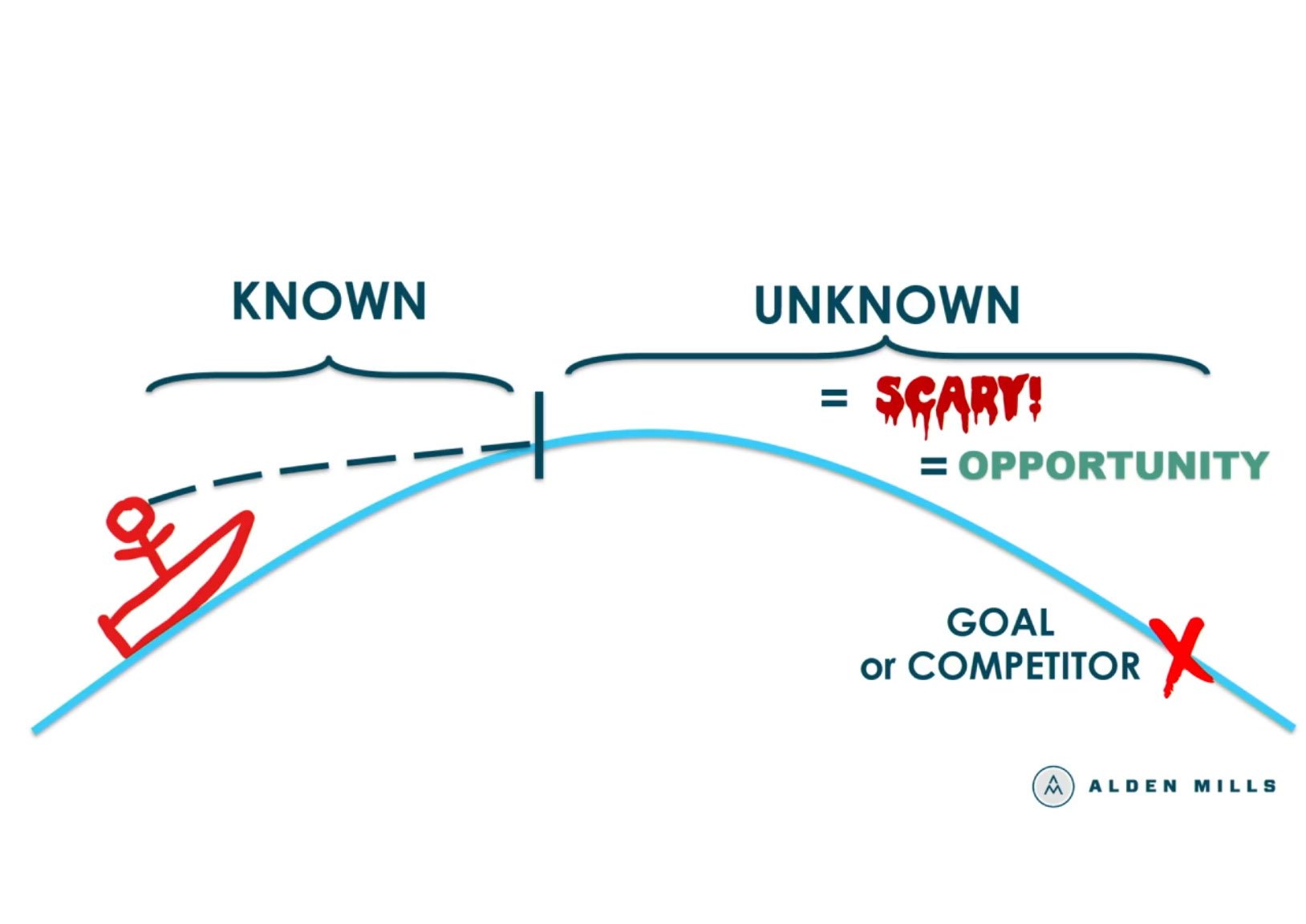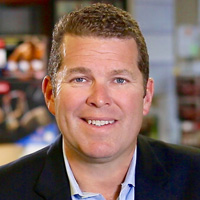Teams exist for one reason: to achieve results. So many people confuse a group, club, or a gathering of people with a fully realized team. However, getting a group of people together is only the first step in the process (See my Seven Traits of Unstoppable Teammates). Forming connections comes next (Check out Three Ways to Connect with People). Now, we turn to the next step, which is setting the team’s direction.
How far do you think a six-foot-tall person can see if standing on top of a small boat in a calm sea? I’ve put this question before audiences all over the world, and they are always surprised at the answer. It’s not nearly as far as you think: a mere 2.9 miles (without binoculars) before the curvature of the earth curtails your field of view.
Goals that appear within our line of sight are the most comforting to us because our brains crave certainty. But, the goals that most unstoppable teams aspire to reach exist beyond the line of sight of any one individual. The team leader’s role is to help team members see well beyond the visible horizon and find ways to surpass real and/or imagined limitations.
The Five Leadership Actions to Achieve Results
I refer to the team leader’s actions as the five As of Achievement: Aspire, Assume, Assess, Assure, and Appreciate. Taken together, these five actions form the second part of the CARE loop (See Teamwork, Soft Skills, and the Leadership CARE Loop). Here’s how I define each of them:
ASPIRE
Bring the goal to life by helping team members personally connect to it. Give them hope and a reason to believe that their collective efforts can achieve the task. The seeds of this action begin when you form your team and connect with them emotionally, but aspirations need to be reinforced again and again. By continually reminding people of the meaning and consequences of their work, you reinforce their dedication to the goal.
ASSUME
Give your team the space, resources, and confidence to do their jobs. Here is where many leaders make their first mistake. They assume that their teammates are not (pick one) good enough, skilled enough, focused enough, committed enough, or tenacious enough. Giving your people the room to start the process of achieving the goal begins a very important next phase in building a deeper level of trust with them.
ASSESS
Initiate performance assessments frequently and transparently to avoid surprises and unify the team. Here let me emphasize the word team, because that’s the appropriate unit of analysis when assessing your teammates’ work. If the assessment is focused solely on individual contributions and progress, you may be inspiring fear and distrust, which shuts down creativity, candor, and true progress.
ASSURE
Encourage and reassure your team of their purpose, progress, and perspective; help team members overcome their fears and doubts. Your job as the team leader is to hear your team’s doubts and concerns, but then help them reframe these challenges in a positive manner. The team leader must be able to provide continual assurance that the team’s efforts matter and contribute to achievement.
APPRECIATE
Show enthusiasm and gratitude for both individual efforts and team progress. Like the other components of the A in the CARE loop, showing your appreciation isn’t so much a distinct phase as it is a consistent action. Think of the actions of appreciation and assurance as swim buddies—they go hand in hand.
Why I Wrote Unstoppable Teams
As I mentioned in my post, Why I Wrote Unstoppable Teams, we need strong teams to solve the challenges of the world, now more than ever. The strength of a company, a community, and even a country depends on great teamwork from unstoppable teams tackling transformative objectives that require the best from everyone.
Unstoppable Teams: The Four Essential Actions of High-Performance Leadership
Unstoppable Teams is the handbook for how to build care-based teams that will push people to achieve more than they ever thought possible. The actions detailed in this book are the same ones practiced by Navy SEALs and successful entrepreneurs; they are used by nonprofit leaders, CEOs, coaches, and sports captains. These actions tap into the power of our human spirit and inspire us to go well beyond our perceived limits.





